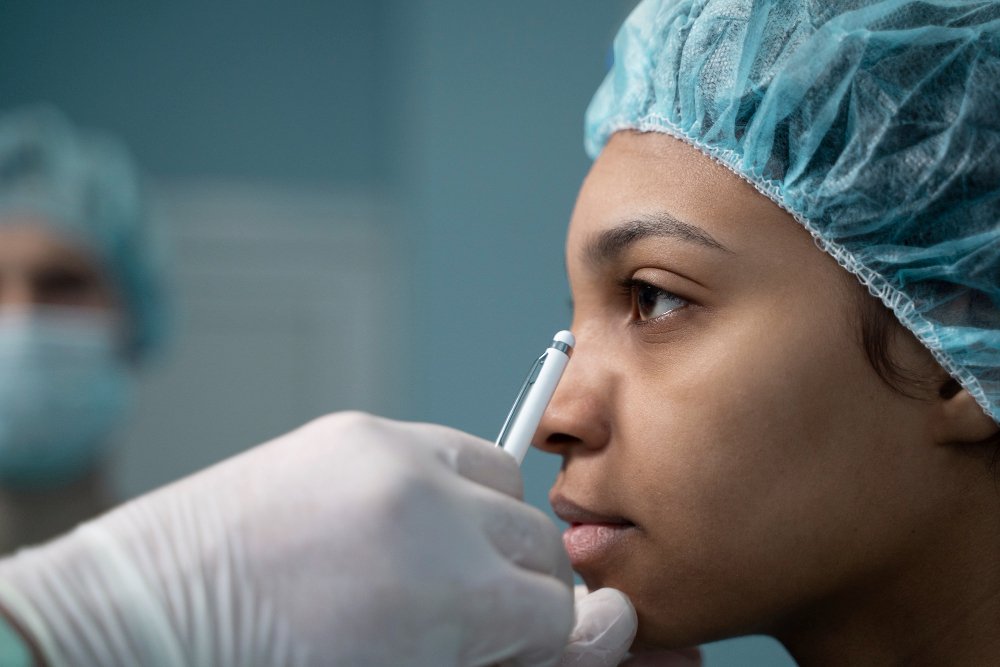Treatment Overview
Inferior Canthoplasty, also known as lower canthoplasty or lower eyelid corner surgery, is a cosmetic and functional procedure that adjusts the outer lower corner of the eyes. It is performed to make the eyes appear larger, more elongated, and youthful while also correcting lower eyelid malpositions such as ectropion (outward turning) or sagging. In Korea, surgeons use advanced microsurgical techniques to ensure natural results, improved eye balance, and minimal scarring.
Purpose & Benefits
- Enlarges and lengthens the eyes by adjusting the lower outer corner
- Softens sharp or upward-tilted eyes for a more natural look
- Corrects sagging lower eyelids caused by aging
- Improves eye symmetry and balance
- Provides a brighter, more youthful appearance
- Can address functional concerns like irritation, tearing, or eyelid malposition
Ideal Candidates
- Individuals who want longer, larger eyes with a softer look
- Patients with sagging or downward-turning lower eyelids
- People with functional eyelid problems such as ectropion
- Adults seeking both cosmetic enhancement and functional correction
- Those who feel their eyes look sharp, narrow, or asymmetrical
Possible Risks & Complications
Though generally safe, risks may include:
- Temporary swelling and bruising
- Mild discomfort or tightness in the lower eyelid
- Asymmetry between the eyes
- Rare visible scarring (minimized with Korean methods)
- Overcorrection or undercorrection requiring revision
Surgical Techniques Used
- Lateral Inferior Canthoplasty: Adjusts the outer lower corner to elongate the eyes
- Canthal Tendon Repositioning: Reinforces weak or sagging eyelid tendons
- Ectropion/Entropion Repair: Corrects eyelid malposition for better function
- Korean Scar-Minimizing Techniques: Incisions hidden in natural creases
- Combination Procedures: Often paired with double eyelid surgery or lower blepharoplasty
Recovery & Aftercare
- Initial swelling and bruising subside within 1–2 weeks
- Stitches are removed after 5–7 days
- Most patients return to work in about 7–10 days
- Temporary tearing, dryness, or mild irritation may occur
- Avoid rubbing the eyes, heavy exercise, and makeup for at least 2 weeks
- Follow-up appointments ensure proper eyelid positioning
Results & Longevity
- Eyes appear larger, softer, and more youthful
- Corrects functional eyelid problems such as sagging or irritation
- Improves overall harmony and balance of the face
- Long-lasting, natural results that age gracefully
- Minimal visible scarring due to refined Korean microsurgical methods
Treatment Process in Korea
Korea is a global leader for Inferior Canthoplasty because of:
- Expertise in Eyelid Surgery: Korean surgeons specialize in Asian eye anatomy and aesthetics.
- Precision Techniques: Use of advanced microsurgery to minimize scarring and ensure natural outcomes.
- Dual Focus on Function & Aesthetics: Combines medical correction with cosmetic improvement.
- High Patient Satisfaction: Thousands of successful cases performed annually in Seoul.
- International Patient Care: English-speaking staff, customized surgical planning, and advanced recovery systems.
Cost Range
The cost of Inferior Canthoplasty in Korea typically ranges from:
- ₩2,800,000 – ₩5,500,000 KRW (approx. $2,100 – $4,100 USD)
Pricing varies depending on: - The complexity of eyelid correction
- Surgeon’s expertise and clinic reputation
- Whether combined with other procedures like double eyelid surgery
- Level of aftercare and revision guarantee
Popular Clinics
Renowned Seoul clinics for Inferior Canthoplasty include:
- ID Hospital
- Banobagi Plastic Surgery
- Dream Medical Group
- TL Plastic Surgery
- JK Plastic Surgery Center
- View Plastic Surgery
- Regen Plastic Surgery
- The PLUS Plastic Surgery
- Migo Plastic Surgery
- Wonjin Beauty Medical Group




